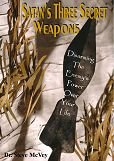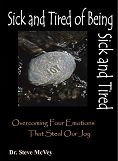 I’ve never considered myself to be particularly “artsy.” Melanie drug me to the Museum of Art in Atlanta to see Monet’s work. I went with her to the Rykes Museum when I spoke in Amsterdam. I saw paintings done by the Masters. I understand that they are masterpieces. I sincerely tried to get it, but I just didn’t get it.
I’ve never considered myself to be particularly “artsy.” Melanie drug me to the Museum of Art in Atlanta to see Monet’s work. I went with her to the Rykes Museum when I spoke in Amsterdam. I saw paintings done by the Masters. I understand that they are masterpieces. I sincerely tried to get it, but I just didn’t get it. I stood staring as if I knew what I was looking at, hoping that the beauty would emerge like one of those three dimensional pictures that become clear if you look at it long enough. But nothing happened. “The depth of conflict overpowers you,” one observer noted as we stood together staring at a painting. “I can hardly bear it,” I answered. But I didn’t get it.
Elvis on velvet or “Dogs Playing Poker” – I recognize a little talent there. But Surrealist paintings by Jean Arp? Or Expressionism by Max Beckmann? French Fauvisme by Matisse? I’m sorry. Speak Swahili and it will make more sense to me.
However, one day I read a book that had a tremendous spiritual impact on me. It was a book about art – a particular piece of art. The book is The Return Of The Prodigal Son, by Henri Nouwen. The whole book is a description of the insight given to Nouwen by the Divine Lover as they sat together at the Hermitage in Saint Petersburg while Nouwen visited Russia.
While he sat for hours looking at the masterpiece by Rembrandt, the Divine Lover started him on a long spiritual adventure. As he watched the changing light and shadow on the painting as the day progressed, the art became the voice of His heavenly Father showing Him that the painting was really about him.
The voice of the Divine Lover drew Nouwen’s attention first to the younger son. It was there that he learned about returning home and what it means to be a son. Then his attention was directed toward the elder brother who stood by with clasped hands and a closed heart. It was through his presence in the painting that Nouwen heard the Beloved Voice speak to him about the levels of rivalry and doubt in his own life. And, at last, he was drawn toward the father in Rembrandt’s painting. There he learned lessons about loving unconditionally and about how to receive those who have wandered far away from home.
Nouwen concluded his writing about what the Divine Lover said to him through Rembrandt:
"When four years ago, I went to Saint Petersburg to see Rembrandt’s "The Return of the Prodigal," I had little idea how much I would have to live what I then saw. I stand with awe at the place where Rembrandt brought me. He led me from the kneeling, disheveled young son to the standing, bent-
over old father, from the place of being blessed to the place of blessing. As I look at my own aging hands, I know that they have been given to me to stretch out toward all who suffer, to rest upon the shoulders of all who come, and to offer the blessing that emerges from the immensity of God’s love."
Throughout history, our loving Father has used artists to enable us to gaze into His own face more clearly. Michelangelo poured himself into his work for the glory of God. Other artists have created works for His glory alone.
In our own day, there are Christian artists whose work become showcases for the glory of God. Only eternity will reveal how the Divine Lover has reached out to tenderly touch lives through the paintings of these artistic oracles of His love. In their work is a subtle expression of the lovely face of Jesus.
Perhaps the beauty of art is a sneak preview of the beauty which awaits us in the honeymoon home our Divine Lover is preparing for us at this very moment. In our own day, we have Thomas Kinkaid, known as the Painter of Lights. He indeed does point us to The Light. I have stared into some of his paintings and wished that I could go there. I’ve felt like I’d like to step right into the picture, if possible.
C. S. Lewis describes this experience in The Weight of Glory. He wrote:
"We want something else which can hardly be put into words – to be united with the beauty we see, to pass into it, to receive it into ourselves, to bathe in it, to become part of it . . . . At present we are on the outside of the world, the wrong side of the door. We discern the freshness and purity of morning, but they do not make us fresh and pure. We cannot mingle with the splendors we see. But all the leaves of the New Testament are rustling with the rumor that it will not always be so. Some day, God willing, we shall get in."
Music, movies and art are three of the most common cultural icons that identify our contemporary culture. The Divine Lover longs to speak to you through these modern mediums in order to show His love to you. By understanding that He speaks through creativity, the Holy Spirit will be able to teach you how to hear His unassuming voice within the culture of your routine lifestyle. Practice the discipline of seeing the face of your Divine Lover in the midst of contemporary culture. He takes delight in surprising you with manifestations of His presence and love.





























I love that book 'The Return of the Prodigal Son' - my favourite Nouwen book.
ReplyDelete"to be united with the beauty we see, to pass into it, to receive it into ourselves, to bathe in it, to become part of it"
ReplyDeleteThis is the heart cry of the creator in every human heart. John 17:21
Yes, this CS Lewis quote is one of the most resonating pieces i've ever heard!
ReplyDeleteits amazing the way Gods presence came come when you are making art with him and for him and so his love can shine through to others
ReplyDelete